You're About to Find Out How Much Sugar is Added to Your Food
This article by Deena Shanker for Bloomberg may be of interest to subscribers. Here is a section:
The U.S. Food and Drug Administration recently ordered up new nutrition labels for cereal boxes, candy bars, and every other packaged food item in the supermarket.
Soon, they will list not just how much sugar is inside, but whether that sugar was naturally occurring, as in raisins, or added later, as on the flakes that come with them.
Though this additional information won’t be required until next year, health advocates predicted that such legally mandated disclosure would deliver less-sugary foods in its wake. They were right.
Four Twizzler strawberry twists have the same sugar content as an apple, but clearly the fruit is a better choice—in no small part because it comes with fiber and Vitamin C. The FDA decision recognized that the source of sugar matters, and that listing “Sugars” alone doesn’t reflect that. The agency decision attempts to outsmart food manufacturers that commonly call added sugar ingredients by other names, such as high fructose corn syrup, agave, and fruit juice. Current-ingredients lists and nutrition-facts panels, the FDA was saying, can be surprisingly deceptive.
Experts in both health and the food industry predicted that the new labels would lead to reformulated products, with those marketed as “healthy” likely to be the first to get makeovers.
Now that manufacturers would have to show in no uncertain terms how much sugar was being added, they would cut it, just as they did with trans fats when their disclosure became required.
This is a welcome development from the Food and Drug Administration not least because the number of ways sugar is defined on ingredient lists is dizzying to say the least. For school lunches my girls had been eating Clif bars until we realised brown rice syrup is the largest ingredient and is essentially 100% glucose. I make my own oatmeal bars now so I know what goes into them and blessedly my kids like them.
It represents a challenge for food companies because the sweetness of sugar is near impossible to replace with fruits, honey and maple syrup. Increasingly health conscious consumers will tolerate the change and if the bulk food aisles of major grocers are any measure muesli or granola bars represent the primary growth avenue for convenience foods.
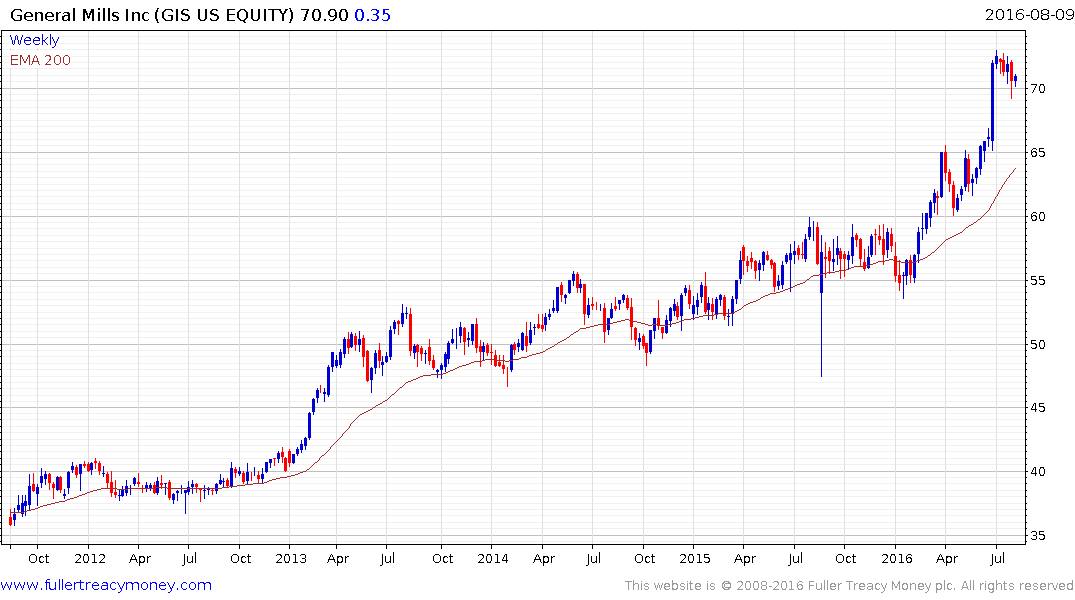
General Mills soared in late June to new highs and some consolidation is currently underway. A sustained move below the trend mean would be required to question medium-term uptrend consistency.
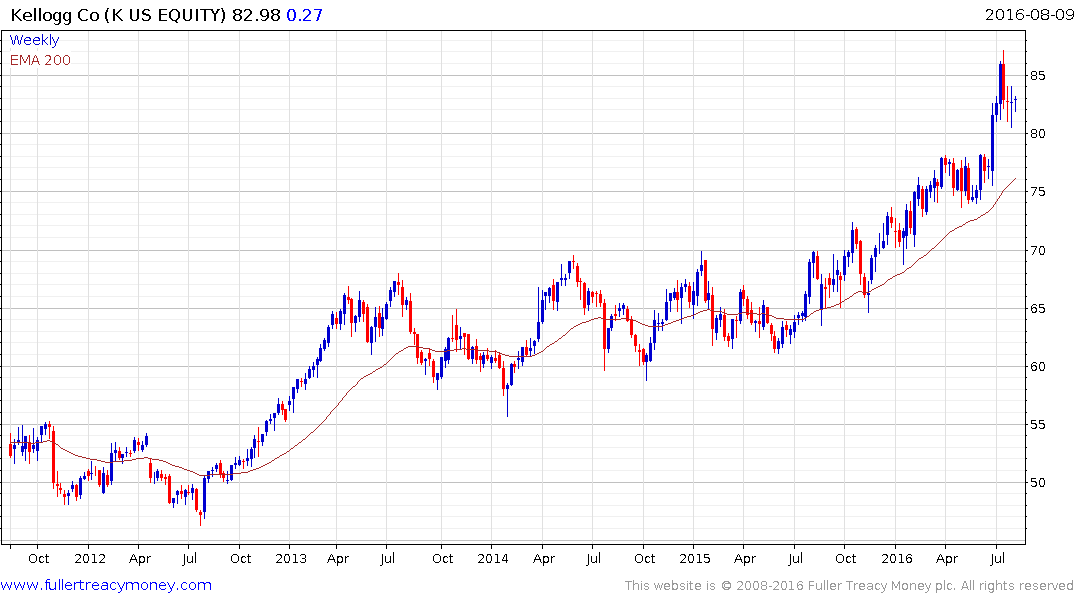
Kellogg has a similar pattern.
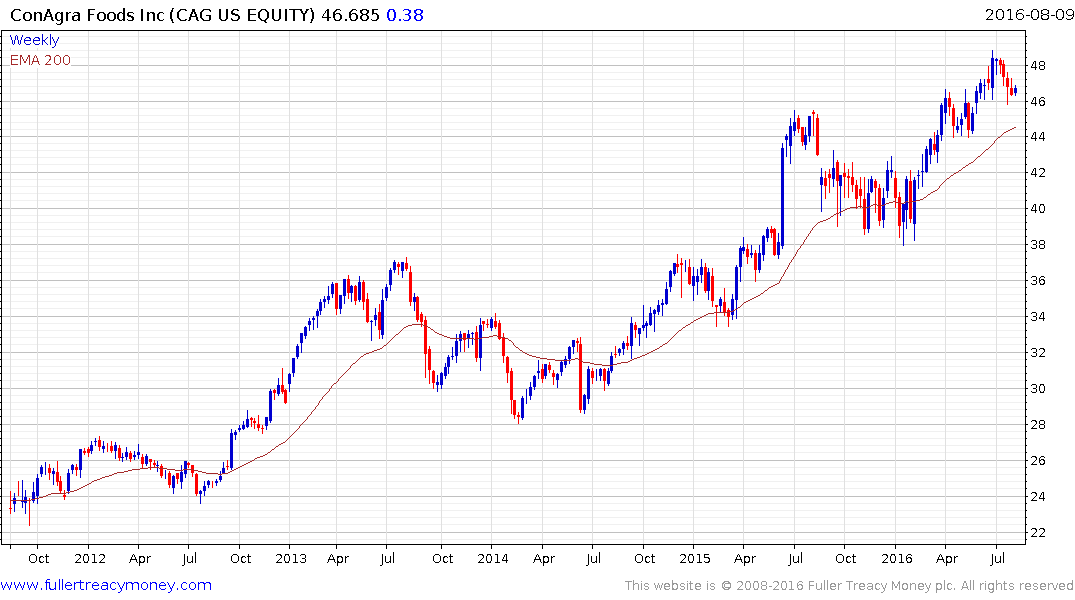
Conagra Foods also remains in a generally consistent medium-term uptrend.
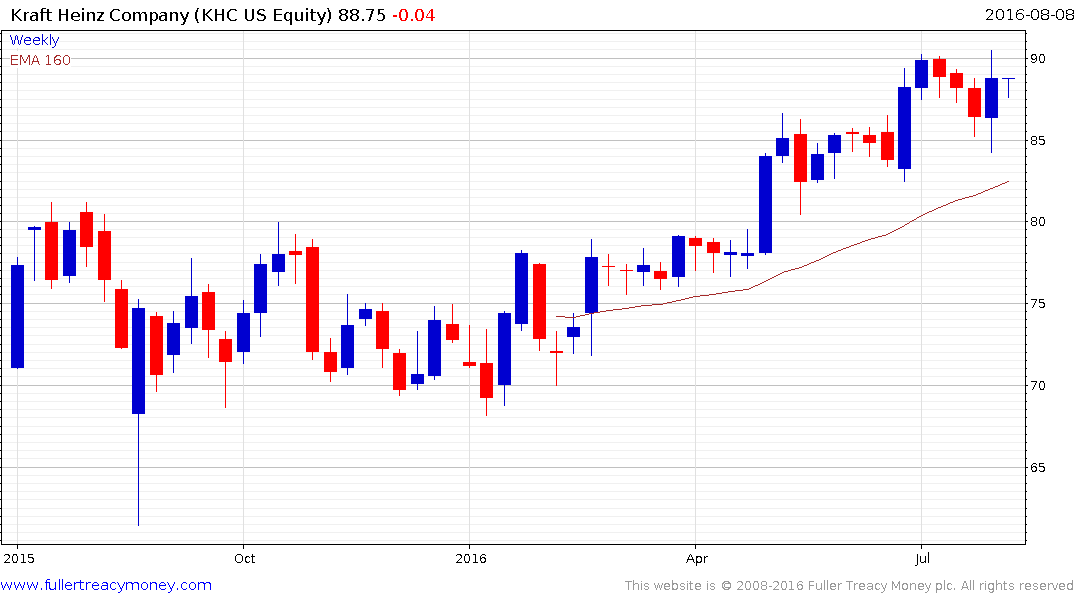
Kraft Heinz is by far the largest convenience foods company and has been trending consistently higher since September.
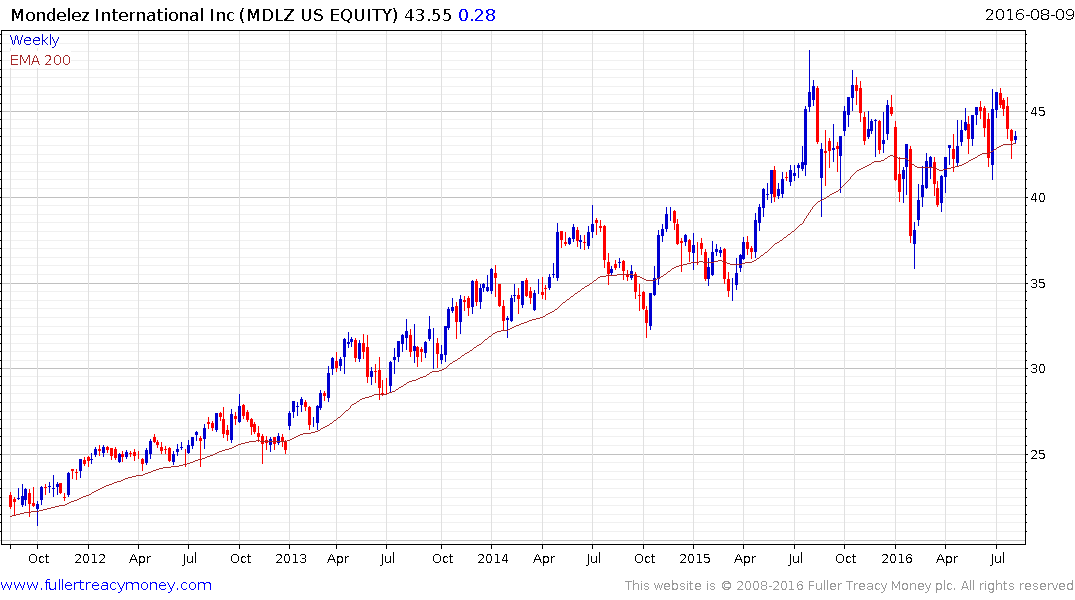
Mondelez International has lost momentum and will need to continue to find support in the region of the trend mean if medium-term potential for continued higher to lateral ranging is to be given the benefit of the doubt.


